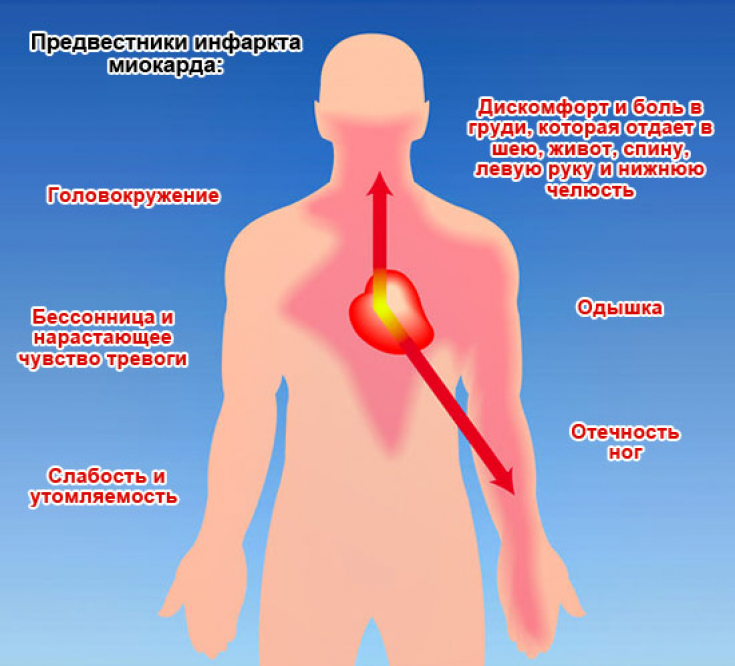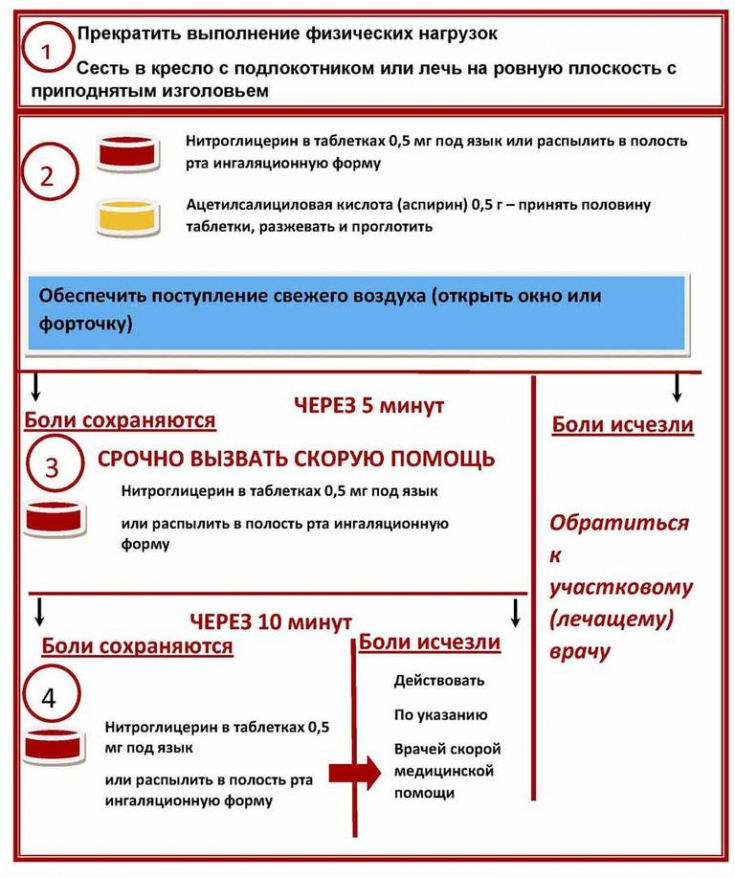Diseases of the cardiovascular system have been and remain the leading causes of sudden death worldwide. But in the opinion of emergency medicine doctors, many tragedies can be prevented if it is understood in time that a loved one has a heart disorder and provide first aid correctly.
Signs of a heart attack are fairly obvious — even without a medical education, one can understand that it is necessary to immediately call an emergency ambulance and begin to provide assistance. And how to do it right, read in our article.
Signs of a heart attack: what to look out for
First of all, you need to understand that a heart attack — a collective concept that includes acute thrombosis of the heart vessels, cessation of blood circulation in the heart tissues due to vasospasm, death of a section of the heart muscle.
All of these conditions are characterized by the following symptoms:
-
Pain in chest. It is often described as "burning behind sternum" and is permanent — does not stop when changing the position of the body, when taking painkillers. This symptom may develop even before the onset of a heart attack and increase sharply during it.
-
Extreme feeling of weakness. It may come on suddenly, and not be associated with fatigue after exercise. The body becomes "cottony", a person needs to make efforts, even to perform the simplest actions.

-
Shortness of breath. This symptom may be similar to the feeling after a quick climb up stairs, when breathing quickens, but is unable to fill the lungs with air. Also, the patient can feel the "stone" on the chest, which seems to not allow him to take a full breath.
-
Irrational fear. This symptom is seen in most people with acute heart failure. The patient may fall into & nbsp; anxious excitement, he suddenly begins to have thoughts about & nbsp; imminent death.
-
Very sweating. Sweat is profuse, and the person may become wet within a few seconds. The sweat is cold and sticky.
Read also: Atherosclerotic heart disease: symptoms and treatments
The symptoms listed are the most characteristic of a heart attack. But it is important to remember that myocardial infarction also has an atypical course, in which the patient may experience abdominal pain or heartburn, numbness in the left hand, suffer from bouts of causeless coughing, and and none of specific he shows no signs of a heart attack. It is especially important to pay attention to such manifestations for women over 45 years of age and persons of both sexes over 70 —— they are more characteristic of "silent heart attacks", which develop asymptomatically and declare themselves only when a significant portion of the heart muscle dies.<
Read also: Signs of heart problems: how to know when it's time to cardiologist
Providing first aid in case of a heart attackFor the correct first aid in case of a heart attack, the following algorithm must be followed:

- Immediately call an ambulance, briefly describing to the dispatcher the key symptoms (pain behind the sternum, shortness of breath, etc.), report a possible heart attack. The "equipment" depends on this ambulance crews, and the readiness of specialists to start cardiopulmonary resuscitation immediately upon arrival to you.
- Give the patient complete rest. Sit or lay him in a comfortable position, the head should be above the level of the heart — place a cushion or pillow under it. Any physical activity of the patient should be excluded.
- Remove or unbutton the patient all items of clothing that may impede blood circulation — tie, shirt collar & cuffs, belt, bra.
- Give the patient ½ aspirin tablets, ask him to chew it thoroughly and swallow it.
- Give the patient a nitroglycerin tablet under the tongue, or use this drug in spray form.
- If the patient is unconscious or in a clouded mind — p. 4 and 5 skip. Under no circumstances do try to give the person water to drink or give him any medication in —— this can cause aspiration and make things worse.
- An unconscious patient should turn his head to side and remove dentures from his mouth, if any.
- In the most negative scenario — cardiac arrest — maintain breathing and circulation of the patient artificially until the arrival of doctors. To do this, lay the patient on the floor, on the back, kneel next to he and, placing your palms on each other on the middle part of the chest (in heart region), press it with frequency 60 -100 times times minute. You should press with straightened arms, leaning on & nbsp; the palms with the whole weight of your body, so that the patient's chest sags towards & nbsp; the spine by 3-5 cm. & nbsp;
Read also: Ischemic heart disease: symptoms and treatment
You may be interested in: Stone massage or stone massage - what is it? Watch the video.






Add a comment